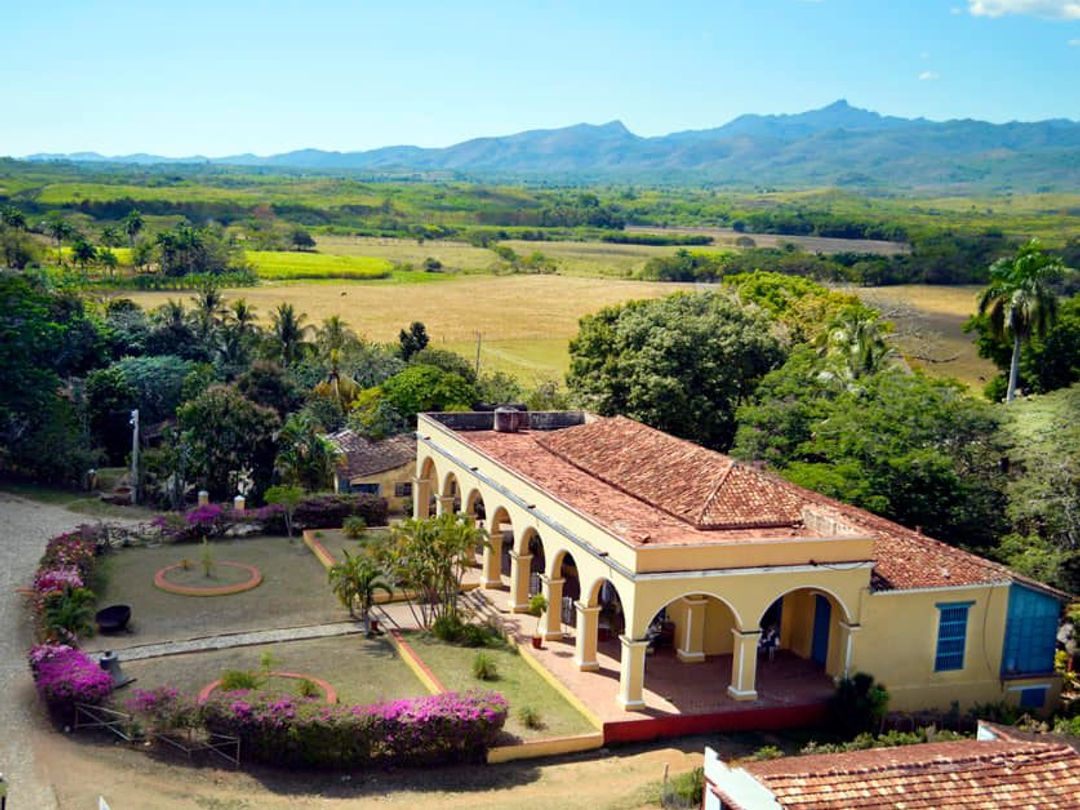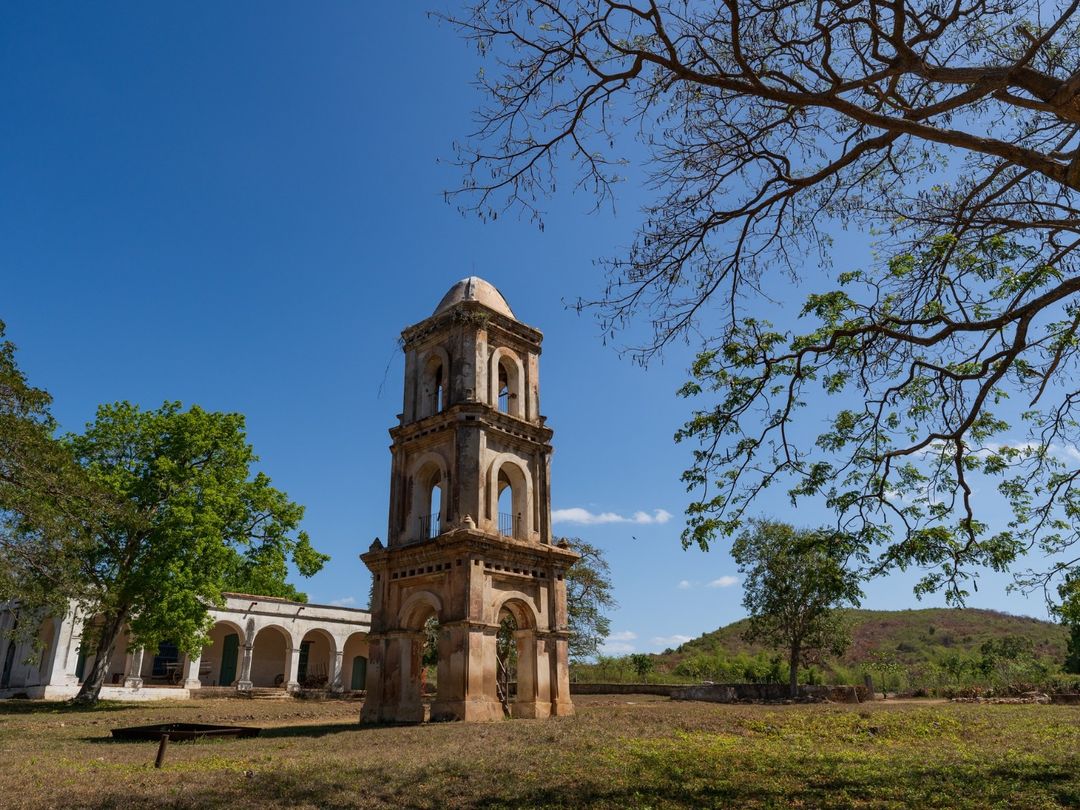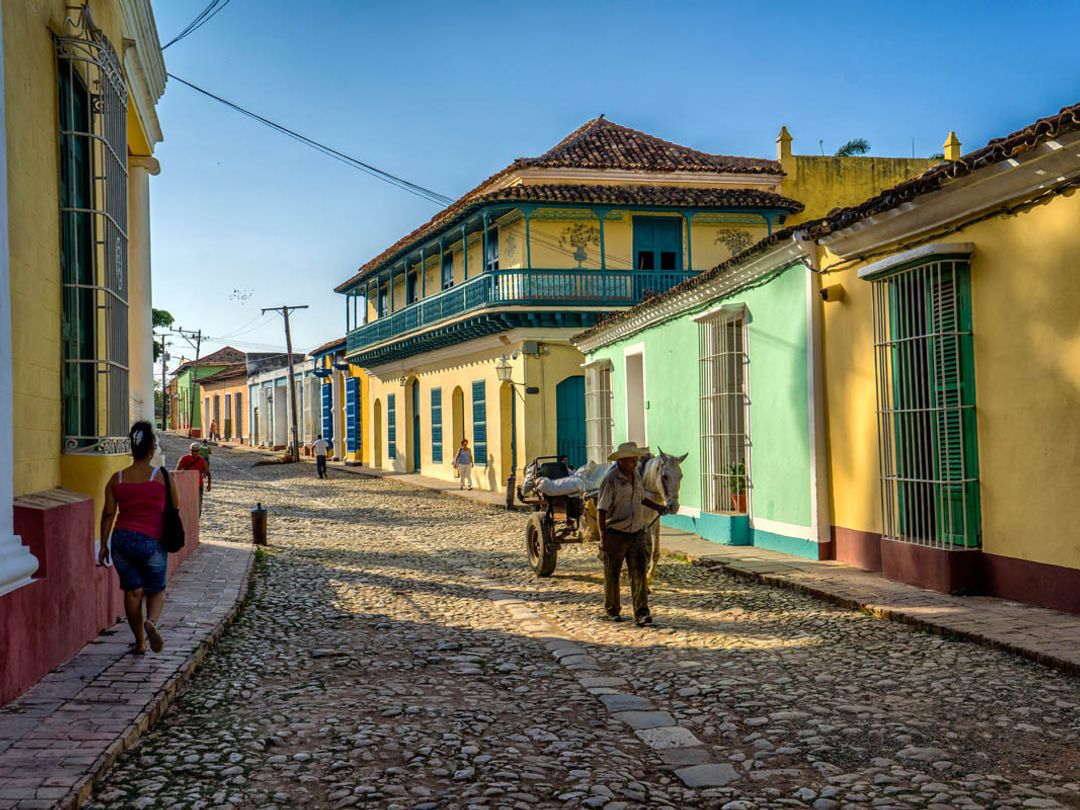"CLASS, HISTORY OF THE HAND FAN IN CUBA" Tour





"CLASS, HISTORY OF THE HAND FAN IN CUBA" Tour
Trinidad – Cuba's colonial jewel. Founded in 1514 by Spanish colonizer Diego Velázquez, Trinidad was the island's third settlement and became one of Cuba's wealthiest cities thanks to the sugar trade and slave labor in the sugar mills of the nearby Valle de los Ingenios (Sugar Mill Valley). Hernán Cortés even set sail from here for Mexico, marking the beginning of new expeditions. This wealth translated into colonial palaces, cobblestone plazas, and colorful cobblestone streets, which remain almost intact today, making Trinidad the best-preserved colonial city in Cuba and one of the most authentic in the entire Caribbean. In 1988, the city and the Valle de los Ingenios (Sugar Mill Valley) were recognized as a UNESCO World Heritage Site, becoming the second Cuban site on the list, after Old Havana. Located on Cuba's southwest coast, in the province of Sancti Spíritus, Trinidad is a destination that combines history, culture, and tradition, inviting you to lose yourself among its museums, churches, and colonial houses, or simply enjoy its unique atmosphere amid the music that fills its squares.
The hand fan arrived in Cuba in the 19th century with the Creole bourgeoisie and became popular as an elegant and useful accessory for the tropical climate, becoming part of the wardrobe of ladies and gentlemen. More than just an object for ventilation, it developed a gestural “language” for flirtation and nonverbal communication, as well as being a cultural icon and an artistic object displayed in museums and used in danzón dancing. Today, the fan remains a distinctive element of Cuban femininity and a reminder of tradition and national identity. Origins and introduction to Cuba: The hand fan originated in Asia and was introduced to Europe, from where it arrived in Cuba with the rise of the Creole bourgeoisie in the 19th century. It quickly became a popular accessory among ladies, even being used by some gentlemen.
A Journey into the History of the Hand Fan in Cuba. This class introduces participants to one of the most romantic and intriguing feminine traditions in Cuban culture: the art of the hand fan. More than just a decorative accessory, the fan became a symbol of elegance and refinement, as well as a subtle instrument of communication for Cuban women during the 17th and 18th centuries. Through delicate movements and specific gestures, women were able to transmit secret messages in social settings, turning the fan into a silent yet powerful language of its own. The session lasts approximately 30 minutes and begins with a warm welcome from a professional host. Guests are invited to enjoy a complimentary cocktail — choosing between a classic Mojito, a refreshing Cuba Libre, or a non-alcoholic alternative — while being introduced to the fascinating history of this cultural tradition.
Each participant will also receive a personalized hand fan as part of the experience. The instructor will demonstrate not only the proper ways to use the fan but also the historical codes and meanings behind its gestures. By the end of the activity, participants will have a deeper appreciation for the role that this accessory played in Cuban society, both as a fashion statement and as a discreet form of expression. This short but enriching class offers a unique opportunity to connect with Cuba’s cultural heritage, while taking home a personalized souvenir that carries with it centuries of tradition.
Minimum number of persons in class: 2 persons. Estimated class time: 30 minutes.
Services included in the excursion:
- Professional instructor.
- Guide (translator) in the client's language.
- A welcome cocktail (Mojito, Cuba Libre, or non-alcoholic).
- A personalized fan as a gift, and you will be shown how to use it and convey messages with this unique feminine item.
Services not included in the excursion:
- Extra meals and drinks.
- Visits and entrance fees not described in the program.
- Tips.
- Recommended: light clothing, sunglasses, hats or caps, tennis, sandals or comfortable shoes and photographic camera.
- For the tour we recommend a water bottle.
More Information
- 30 min.
- 09.00 hrs
- Tour guide included
- Family friendly
- Offered inSpanish and English
Options and Availability
Collective tour
Tour collective with specialized instructors in several languages. The best price.Policies and Conditions
- Pick-ups may be delayed up to 15 minutes, depending on the punctuality of the clients.
- This tour operates with a minimum of 2 passengers. The agency will reconfirm 48 hours before the departure of your tour. If the provider decides to cancel, the agency will offer you an alternative tour or refund the cost of your tour in full.
- All excursions are guaranteed in English and Spanish. The rest of the languages will be confirmed according to availability.
Cancellation and no show policy:
- Cancellations more than 72 hours before the excursion: No penalty applies.
- Cancellations between 72 hours and 48 hours before the excursion: a penalty of 50% of the total value of the excursion applies.
- Cancellations less than 48 hours before the excursion: a penalty of 100% of the total value of the excursion applies.
- NO-SHOW: a penalty of 100% of the total value of the excursion applies.



